At the Nhow Marseille Hotel in France, Italian Furniture and Local Grit Lead the Design
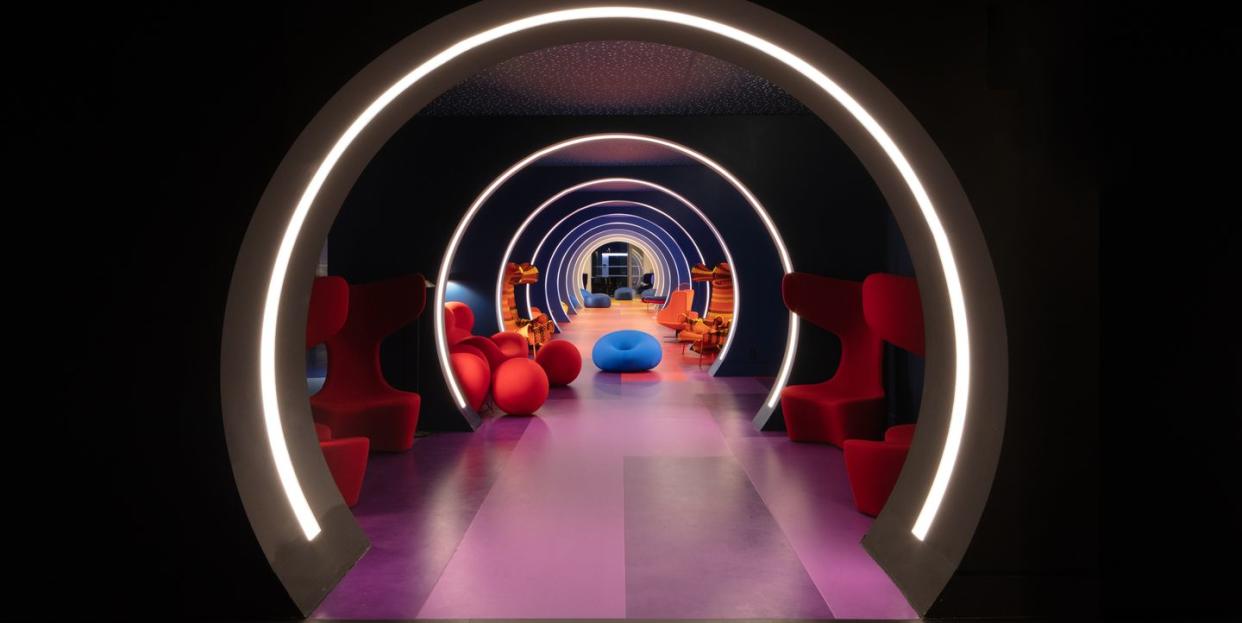
When envisioning a hotel along the coast of Provincial France, what do you picture? Ancient neoclassical facades? Sleek brutalism à la local hero Le Corbusier? Or, what about an Italian post-modern pad with neon lights, graffiti walls, and a cactus-themed bar?
That’s what you’ll find at the nhow Marseille-a newly refurbished beach hotel on the Corniche. While these images may strike you as unusual for the south of France, local architects Claire Fatosme and Christian Lefèvre, who designed the hotel along with Italian architect Teresa Sapey, say they speak to the pride and “light and dark" energies of the city.
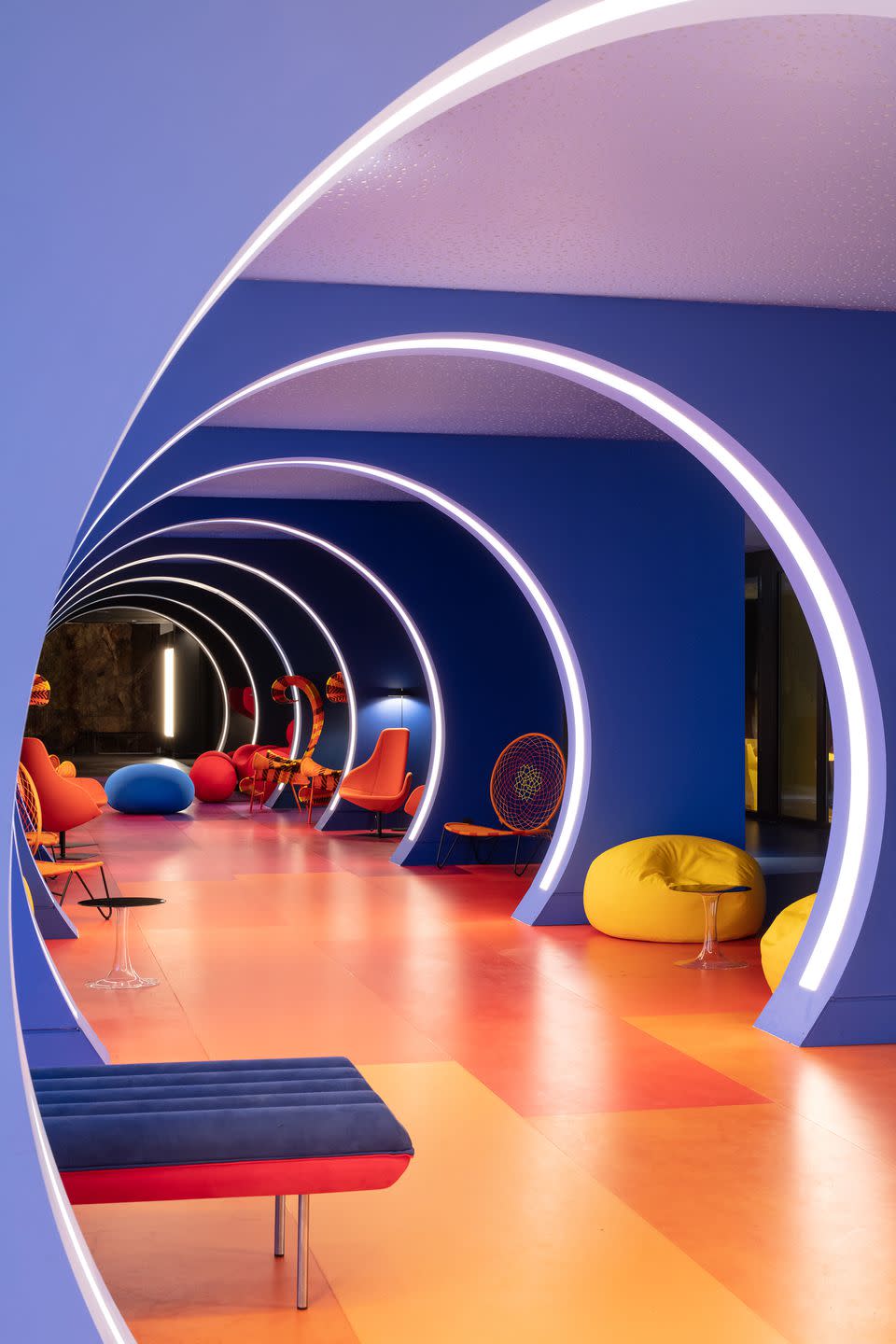
Historically, Marseille has been infamous for its gangs and violence, but renovation efforts are pushing to make the seediness give way to sunniness. Poverty still impacts much of the population though, and the architects didn’t want to shy away from this reality when designing the 150-room hotel’s luxury interiors.
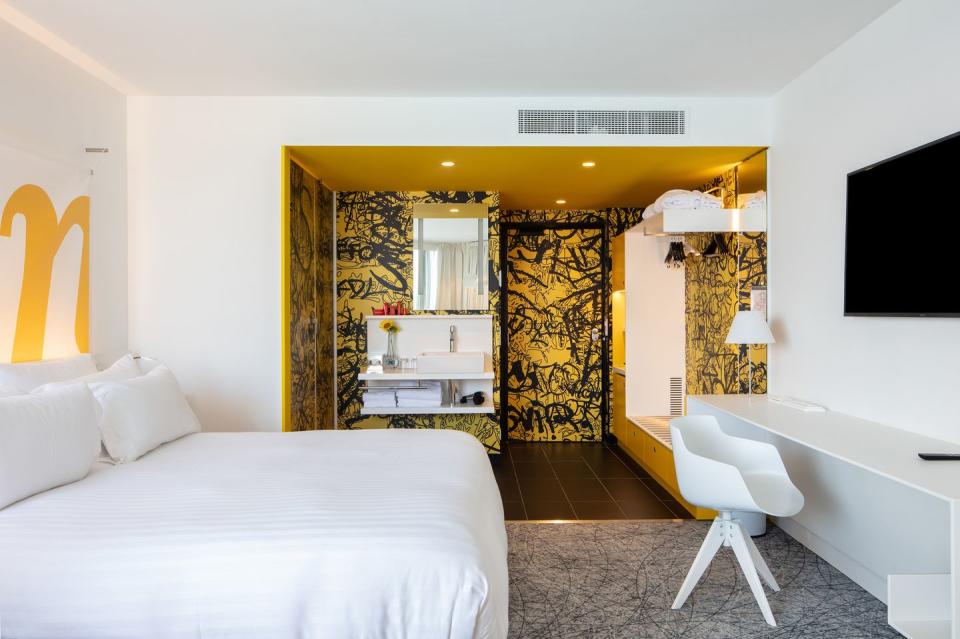
Fatosme and Lefèvre decorated the corridors and bedrooms with graffiti taken from the Cours Julien, or creators' district, in town. They photographed different tags, then mixed them together in a mad scramble that appears throughout the hotel. They worked with local artists to design other graffiti-style pieces, such as a lobby mural by artist Tristan Bonnemain, of the city’s present and past characters.
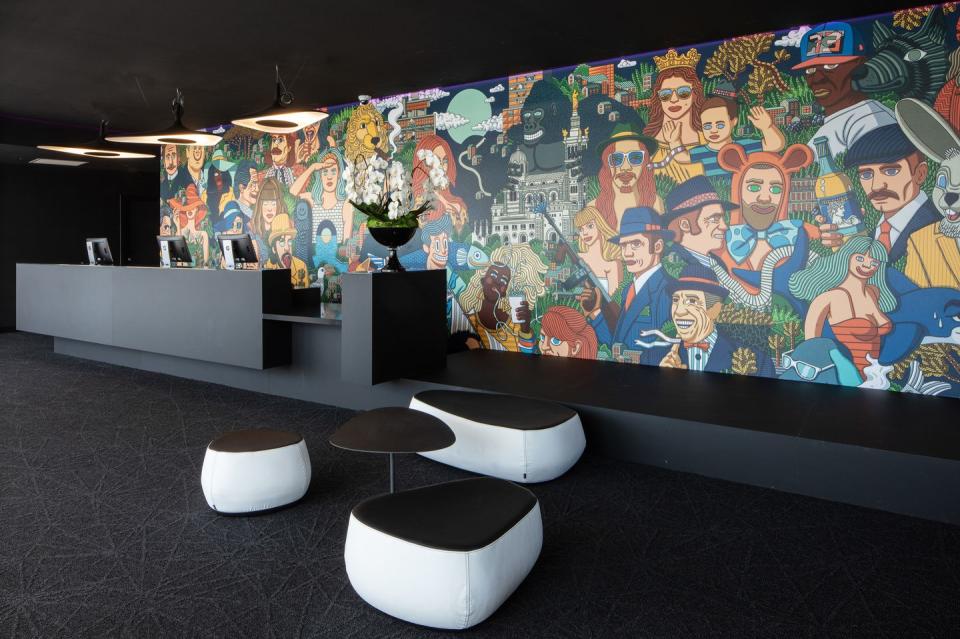
While Fatosme and Lefèvre designed these spaces and the “Sky Bar,” Sapey handled all of the areas on the sea-level ground floor. Sapey was tasked with making use of open, dark spaces, including a cavernous alcove consisting of columns plastered with disembodied legs swimming up to the ceiling.
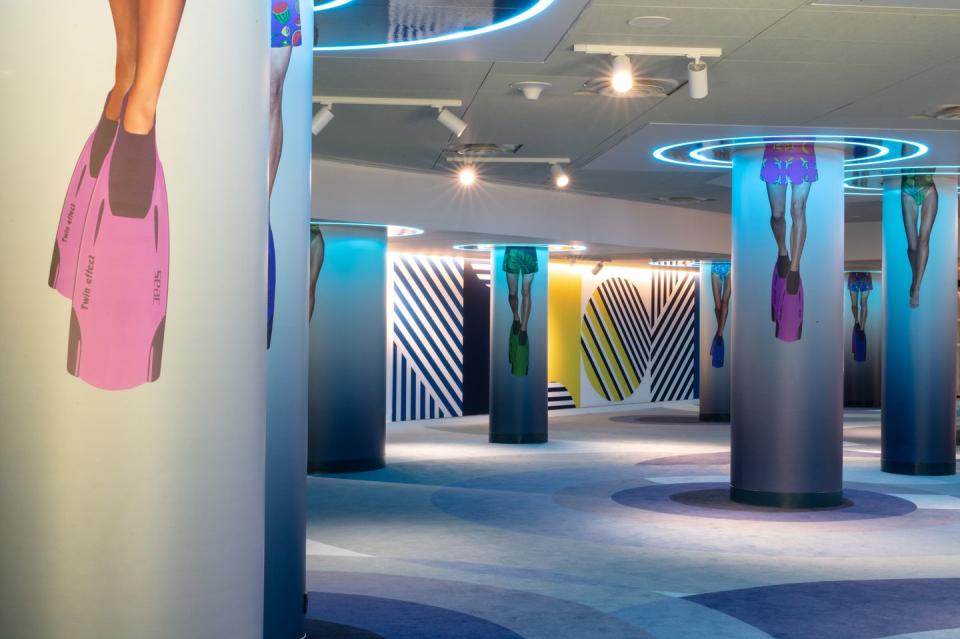
The effect is Palm Springs meets murderer’s row. From there, you make your way through the tunnel bar that Sapey designed to resemble a neon church aisle filled with curving Italian chairs instead of pews. You eventually arrive at the sea, not the altar, but there’s wine at the end all the same. When designing the neon walk, Sapey says she also called on scenes of James Bond shootouts and the dangerous side of Marseille “that’s a bit hidden.”
“Violence is part of the city. In Italy, we say, ‘Don’t cover your eyes with your hands because, then, one day you will have to see reality’,” Sapey said. “This project, we want it to be for the city, in the city and belong to the city.”
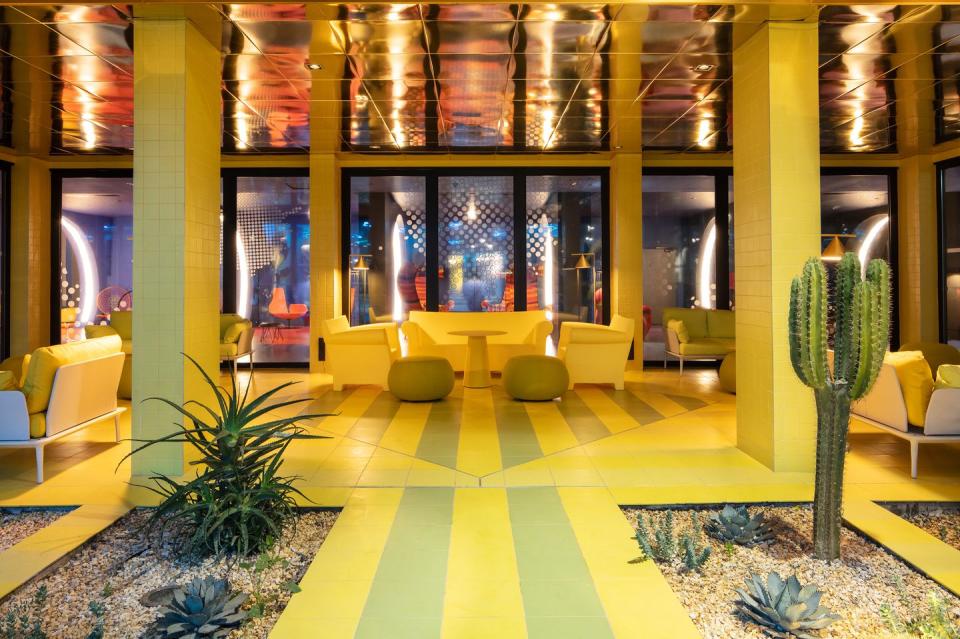
The violence is cut with playfulness-a table made out of recycled blue jeans and funhouse furniture from a laundry list of Italian houses: Cappellini, Moroso, B&B, and Gufram. At the height of whimsy, the hotel’s “Cactus Bar” on the ground floor came out of a desire to have a “DNA link” to Marseille’s natural side. Less a bar than a break-off room for smokers and selfie snappers, the indoor greenery speaks to the exotic gardens of the Mediterranean coast and the mountains surrounding nhow Marseille.
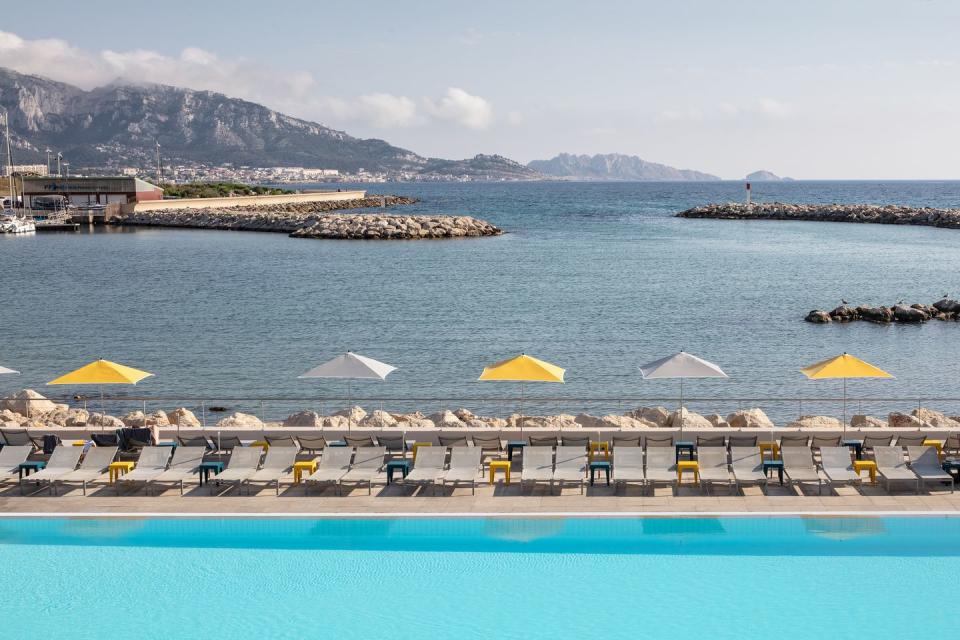
The design is a far cry from anything you’d find in the old port, but the ocean-facing rooms give you the impression of being aboard a boat (especially after a glass or two of Bordeaux). Refurbished pieces of sails function as headboards and a harbor full of sailboats lies just beyond the pool.
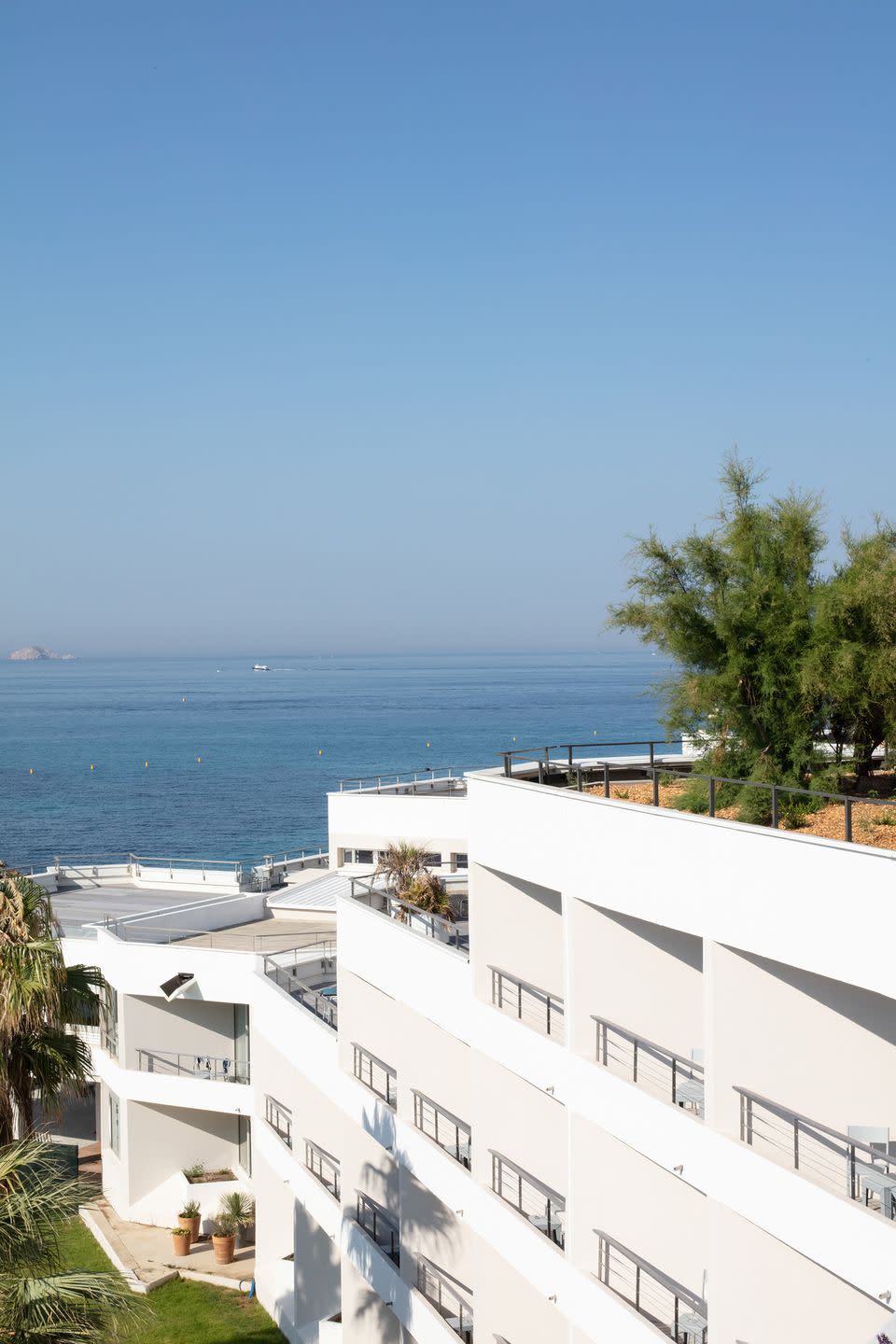
In the Sky Bar on the third floor, an original chandelier made up of 4,000 steel sardines, created for Sciabetti by English artist Frances Bromley, swims along the ceiling. Floor-to-ceiling glass showcases the ocean, which you can hear lapping from the bar balcony.
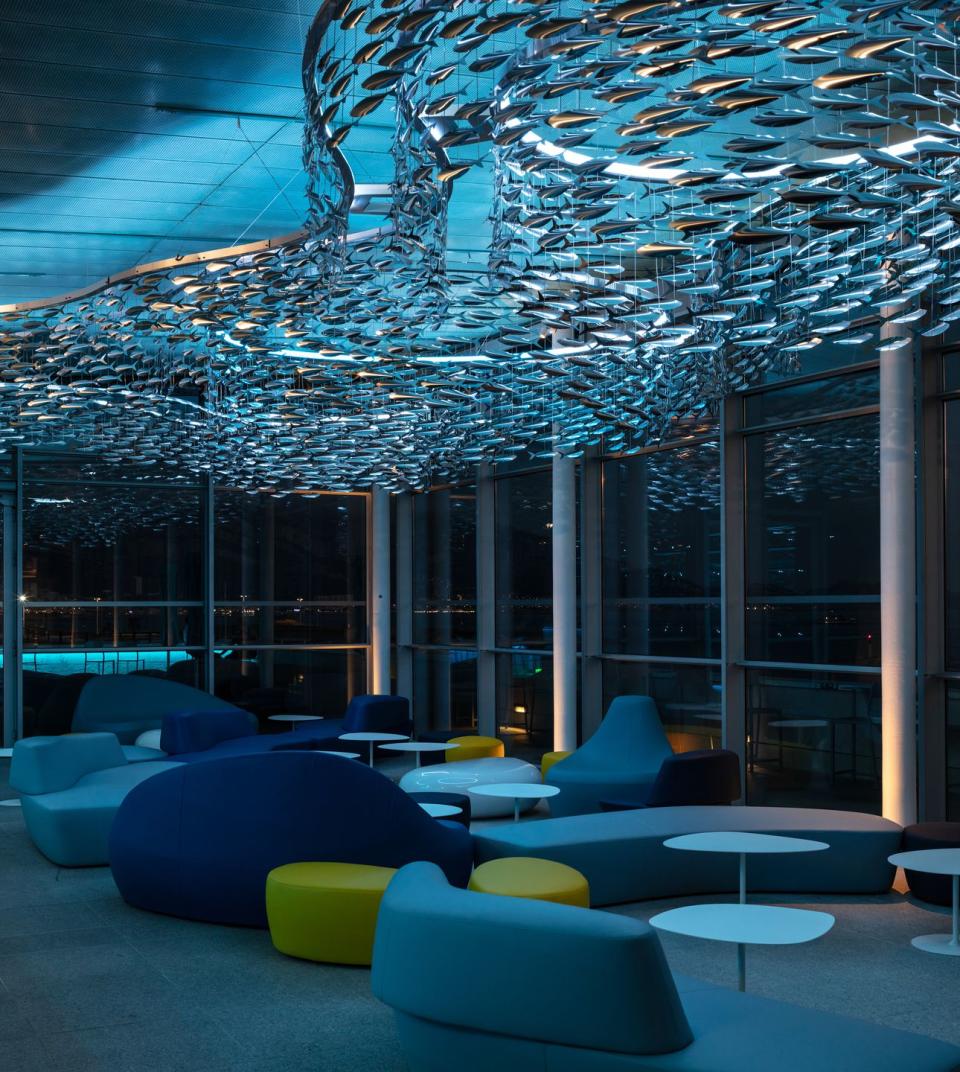
Having officially rebranded and re-opened this fall, the nhow Marseille at Palm Beach was once a popular spot among locals, famed for the freshwater of the Roucas Blanc spring that runs through the building. The original Palm Beach hotel, built in 1976, was where Lefèvre himself learned how to swim, and management is trying to revive the local party atmosphere at the location. Hence the number of bars.
It’s a welcome back-not an introduction, say Fatosme and Lefèvre. They hope the hotel acts as a monument of change in Marseille. It’s historically been a rebel city since the 14th century, they note, and every rebel city needs a retreat with a bit of bite.
('You Might Also Like',)

